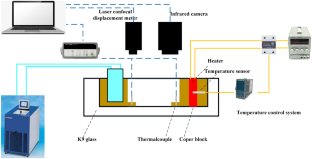Thermocapillary Convection of Evaporating Thin Nanofluid Layer in a Rectangular Cavity
Abstract
Thermocapillary convection of nanofluid with evaporating phase change interface occurs in a variety of industrial processes such as micro/nano fabrication, ink-jet printing, thin film coatings, etc. Previous studies have mostly focused on the phenomena of thermocapillary convection in pure fluids without phase change. This paper reports the first fundamental experimental work on the thermocapillary flow of a thin nanofluid layer under the effect of evaporation. This research focuses on the behavior of a volatile thin nanofluid layer in a rectangular test cell under the effects of horizontal temperature gradient. The buoyancy effect can be neglected inside this thin liquid layer as in microgravity conditions. HEE7200 and HFE7200-Al2O3 nanofluid are used as working fluids to analyze the effect of nanoparticle addition. The results indicate that the linear relationship between the thickness of the liquid layer and the duration of evaporation is not changed by nanoparticles. HFE7200-Al2O3 nanofluid always has a higher evaporation rate than its base fluid with the temperature ranging from 2.98 °C to 13.92 °C. The critical Marangoni number for the nanofluid is lower than that of the pure fluid, which indicates that the addition of nanoparticles promotes the flow pattern transition.


 求助内容:
求助内容: 应助结果提醒方式:
应助结果提醒方式:


